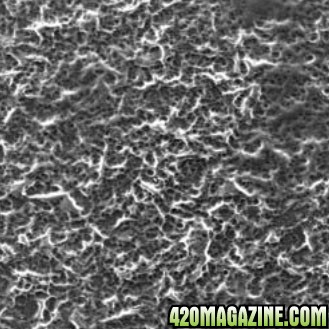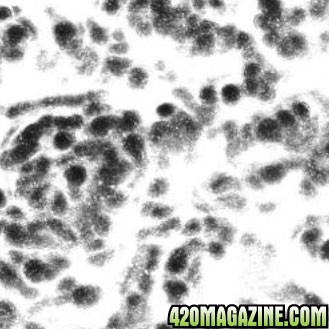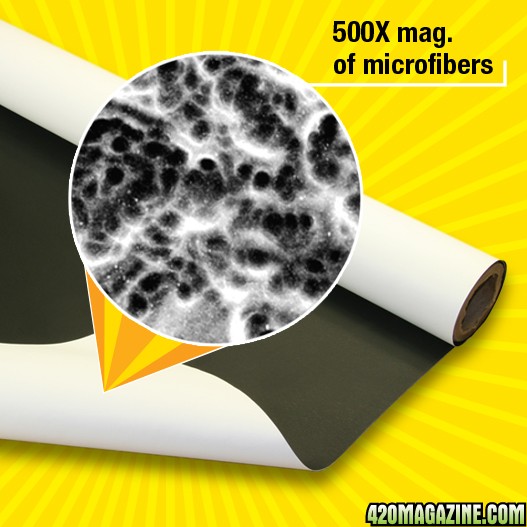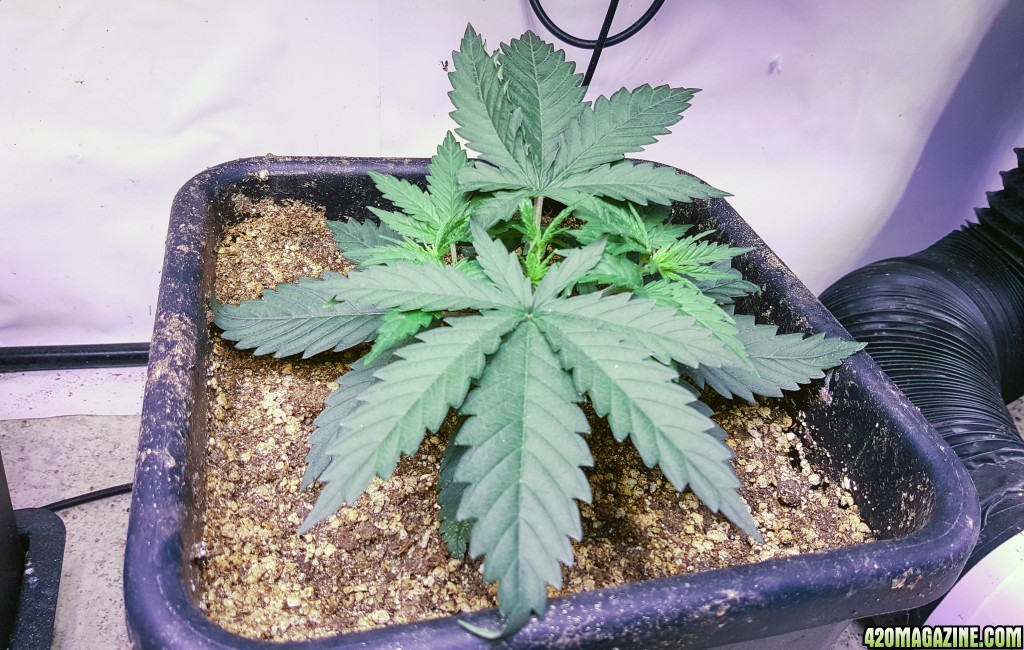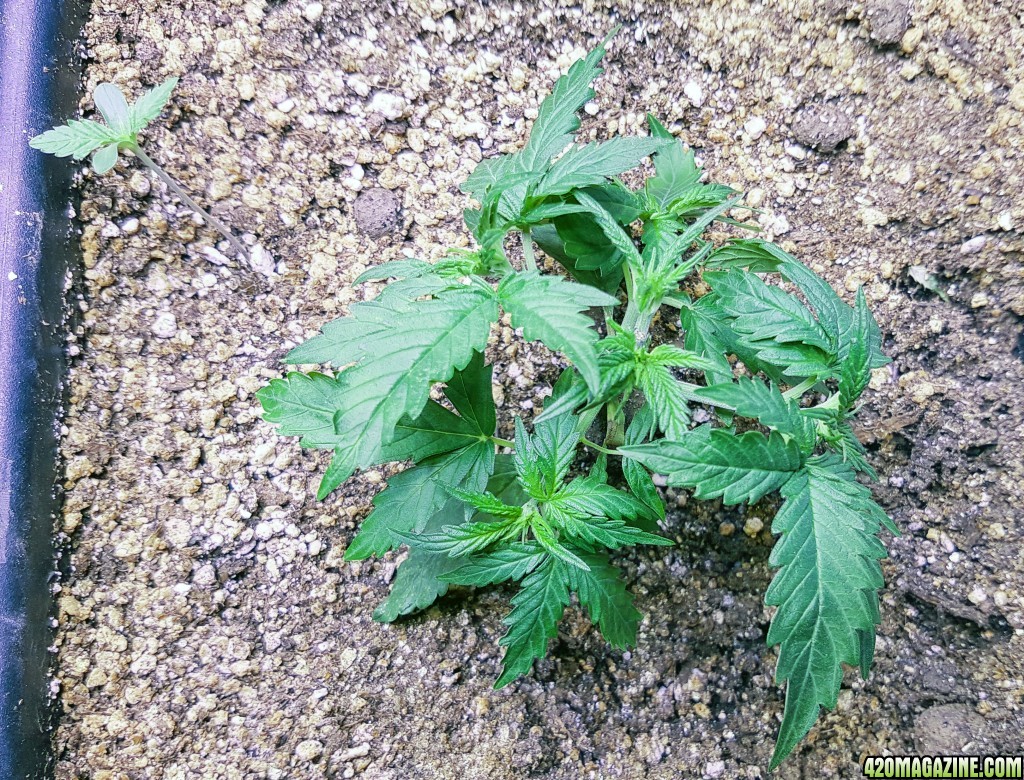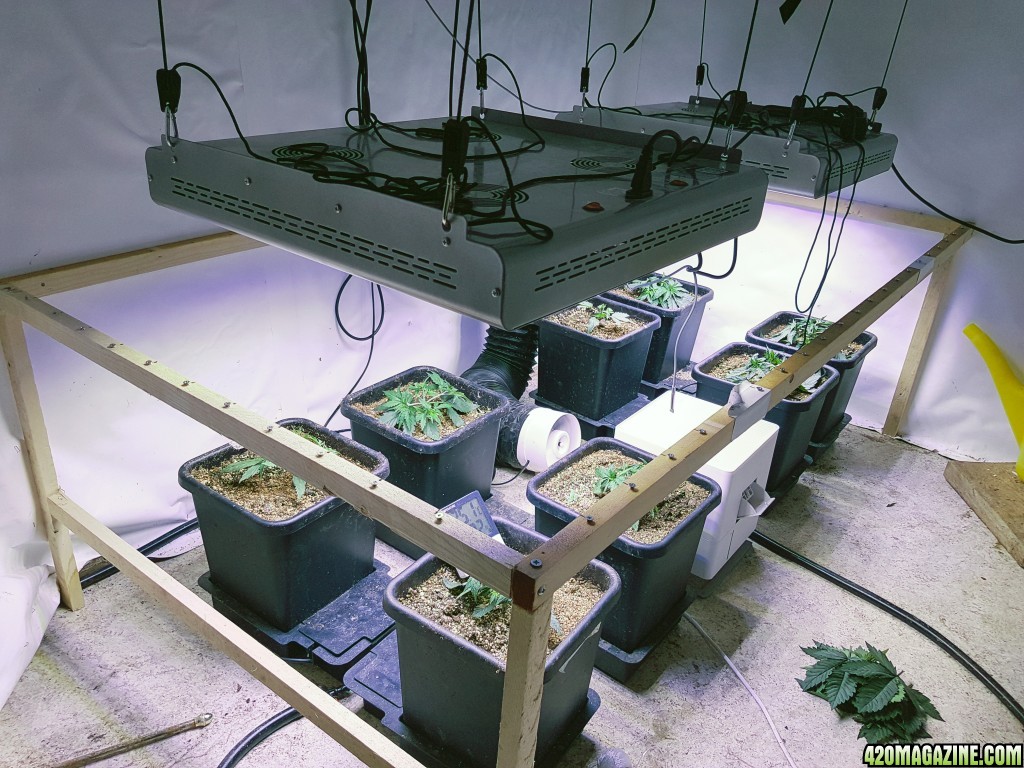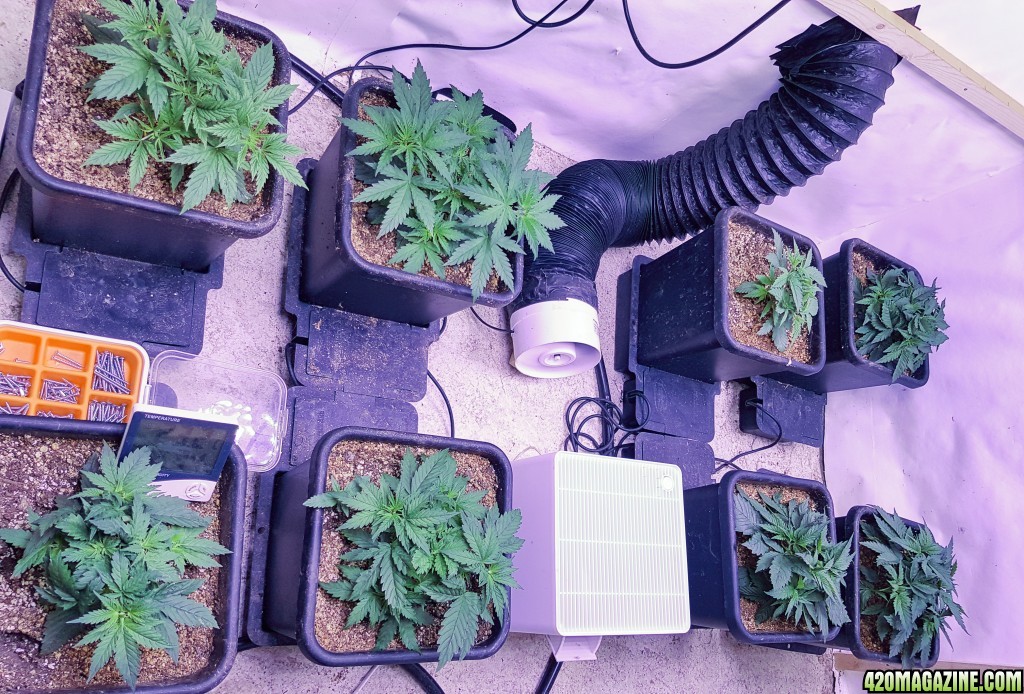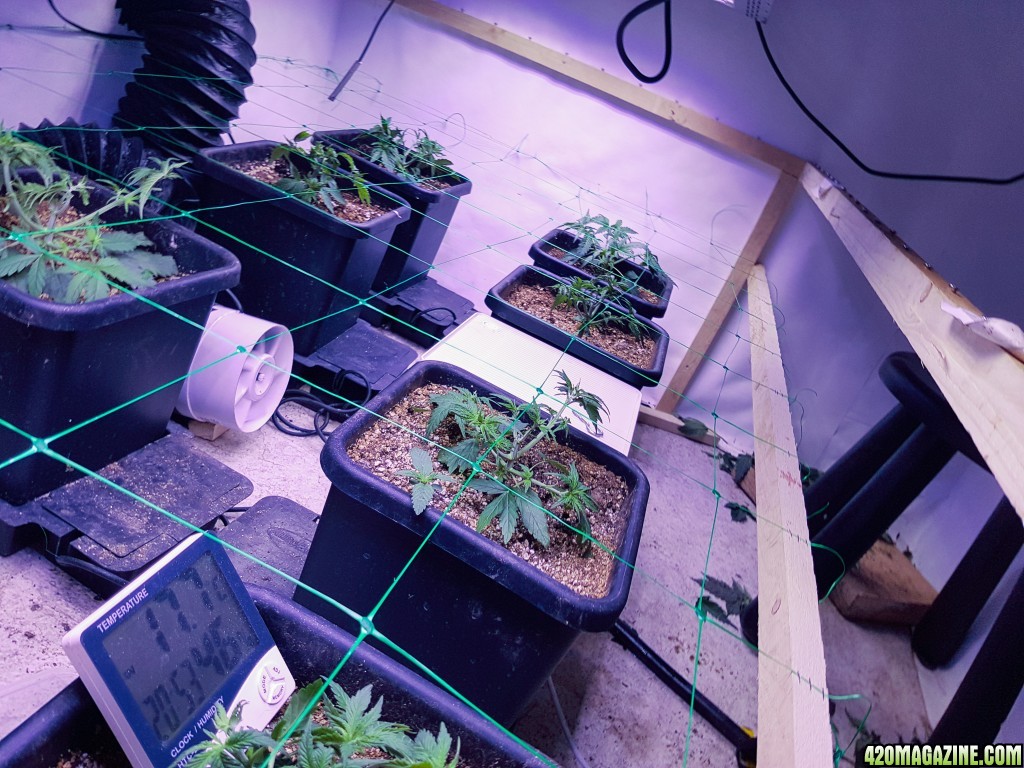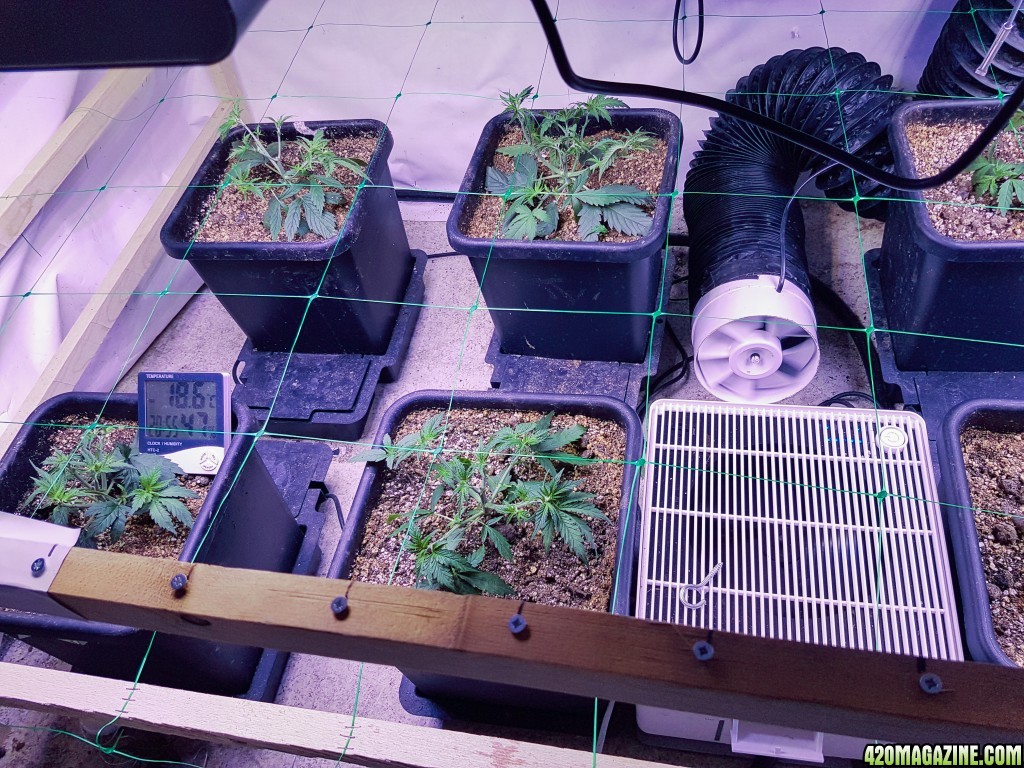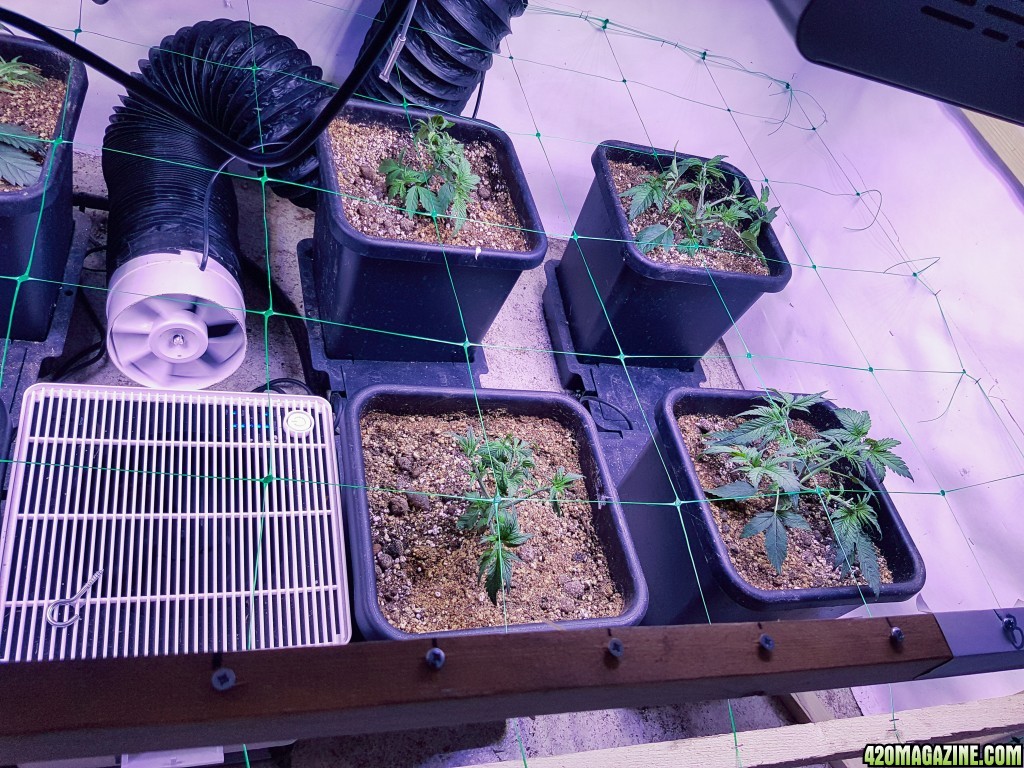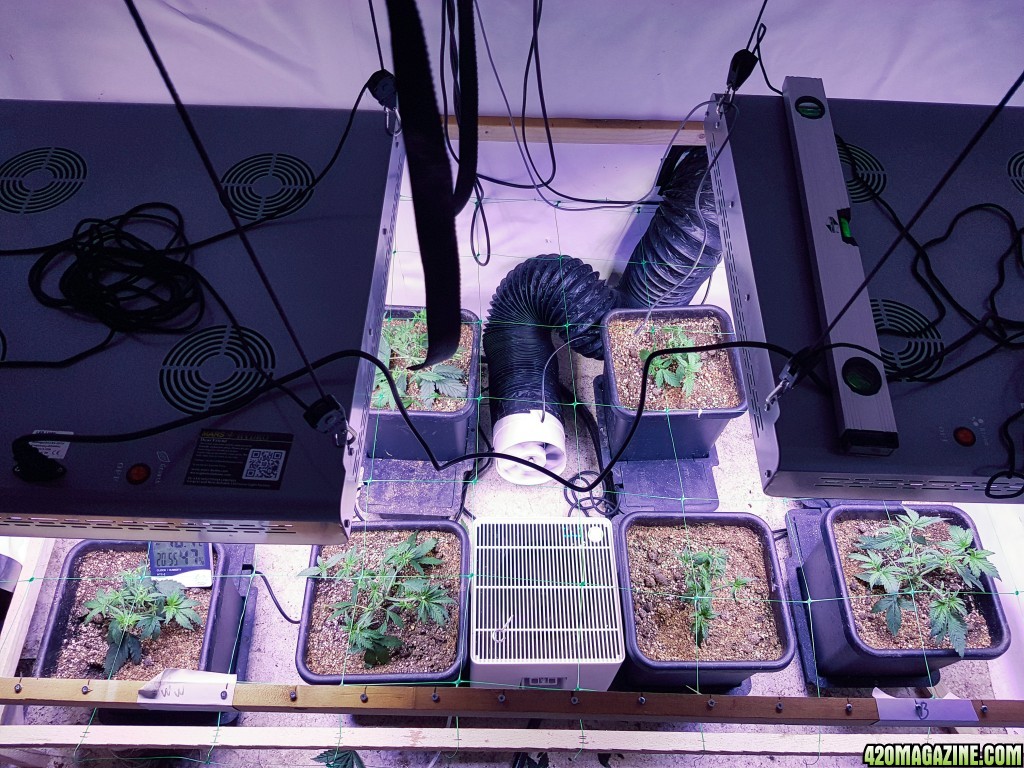Some more info about the white stuff:
"People commonly use the acronym ROYGBIV for this narrow band of wavelengths to remember the order of color within the visible light spectrum, and its place in the overall electromagnetic spectrum. (Infrared spectrum (IR)/red wavelengths are to the right and violet wavelengths/ Ultraviolet (UV) spectrum are to the left.
The visible light spectrum is relevant to hydroponic gardening because it is roughly the same electromagnetic or “light” spectrum that is relevant to plant stimulation and growth. Simply speaking, a plant’s chlorophyll cells absorb light and in turn influence photosynthesis. Particular color bands or wavelengths (nm) found in the visible light spectrum can promote different cycles of plant growth; germination, growth, flowering, and budding.
Reflectance % Measurement, wavelength in the relevant spectrum:
The reflecting characteristics for any given material will be different for each electromagnetic wavelength. A measurement or reflective % for one wavelength is not a relevant indicator for an entire spectrum.
Example of relevant spectrum and measurement:
A material can claim to be 97% reflective, but what spectrum is it referencing - sound, heat, or light? Is it a single wavelength measurement, an average, a mean and in what range? It may sound good if a material claims to be 97% reflective, but if this value is measured at a single wavelength, say 216nm, it would mean the material is reflective in the ultraviolet spectrum, which would be detrimental for plant growth.
[TABLE="width: 100%, align: center"]
[TR]
[TD]Why 94% reflectance matters:
Every time a light ray (radiant energy) contacts a surface, a portion of the energy is absorbed and a portion is reflected, but there is no energy loss. Materials that reflect significantly more radiant energy than they absorb are considered reflective. ORCA Grow Film® is 94% reflective across the full visible spectrum, or it only absorbs 6% of the radiant energy. Reflective materials are used to increase the overall effective coverage from the grow lights in a grow room. When you cover the walls, ceiling, and floors with a quality reflective material you can increase the overall efficiency of the grow room by 30 to 75 percent.
All grow room layouts and designs involve multiple reflections/light bounces due to corners, angles, and static objects in the grow room. A high performance reflector will minimize absorbance from multiple bounces and maximize the usable exiting light. A small difference in reflectance can make big difference for a grow room’s total lighting efficiency."
[/TD]
[/TR]
[/TABLE]
 The faster the better. Thanks to your amazing lamps the speed is not a problem with my grows
The faster the better. Thanks to your amazing lamps the speed is not a problem with my grows 
 The faster the better. Thanks to your amazing lamps the speed is not a problem with my grows
The faster the better. Thanks to your amazing lamps the speed is not a problem with my grows 
wow,your clone are big girl now.




